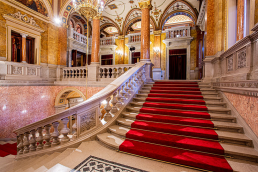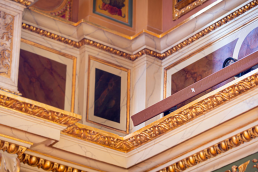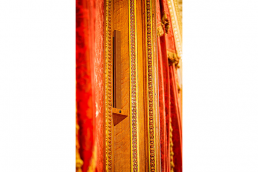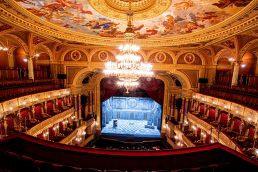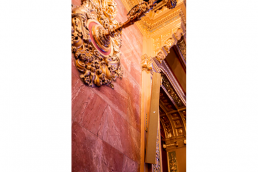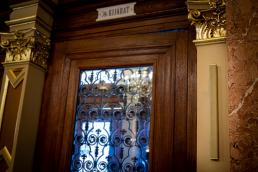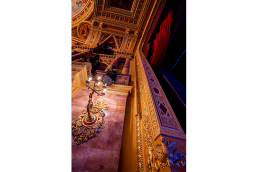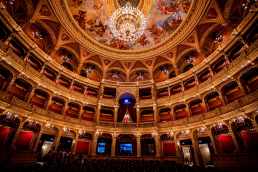This website uses cookies so that we can provide you with the best user experience possible. Cookie information is stored in your browser and performs functions such as recognising you when you return to our website and helping our team to understand which sections of the website you find most interesting and useful.
The Hungarian State Opera House
ProjectThe Hungarian State Opera HouseLocationBudapest, HungaryInstallerChromasound, HungarySubmitted byK-array USA
After much anticipation, the Hungarian State Opera reopened in 2022, with an interior renovation that has successfully returned this cultural gem to its former glory. With a full calendar of performances, the K-array system provides clear, reliable and discreet audio across a variety of use cases.
“The loudspeaker system is visually just as elegant and graceful as it can be in this historical environment,” said the project’s Andor Fürjes. “I sincerely hope that at least some of the audience will be wondering where this great sound is coming from.”
Through EASE modelling, Fürjes confirmed the viability of a K-array system leading to the installation of 18 Python and six Kobra line array loudspeakers, driven by Kommander amplifiers. Sub-bass is provided by the Thunder and Rumble series of subwoofers.
Describing his design decisions, Fürjes explained: “The main loudspeakers were set to be as high as possible to provide more on-axis response from the stall seats up to the topmost listening positions. Subwoofers were exiled to the upper boxes next to the stage. Some subwoofers are installed below the stall seats floor for a more direct bass response.”
Throughout the King’s Red Saloon, fourteen ultra-flat aluminium line array element loudspeakers ensure discreet yet powerful sound. The preservation of the look and feel of the space was of great importance to this project, and the custom finishes offered by K-array helped with this.
“It was very easy to work with K-array loudspeakers,” said Chromasound installation engineer, Bálint Rédei. “We were wondering how the custom colours would fit into the environment but on opening the boxes, we saw immediately that the colours were superb and a perfect fit with the space. I especially liked the gold finish on the main PA column in the proscenium, and the tiny red-coloured Vyper loudspeakers, deployed in the corners of the King’s Red Saloon.”
Various pieces of audio equipment from Chromasound’s catalogue were installed within the project. This included: 18 Python-KP102 I, one Kommander-KA34, two Kommander-KA104, two Rumble-KU210, six Kobra-KK102 I, 14 Vyper-KV52 I and eight Thunder-KMT21 I.
“The use of loudspeaker systems in an opera house is controversial,” explained Fürjes. “Some say it is useful, but only to support sound effects. Others say an opera hall is a great place to gather for any purpose and in that case, it should have a loudspeaker system like any other multipurpose venue.
“Traditionally, architects don’t like to see anything that may obstruct the view or disturb the visual focus of what is happening on stage. People interested in monument protection will reject anything that might affect historic details or harm original structures. On the other hand, users and technicians dream of easy-to-use equipment that sounds musically pleasing and intelligible at all listening positions. Some of these conditions are present in most venues, but all of them were present in the design of Hungarian State Opera.”
The system needed to be discreet, high-quality and win over those sceptical of allowing a loudspeaker system into a traditional opera hall.
Preserving sightlines and fitting a renovation brief which focused on returning the Hungarian Opera House ‘back to the original’, was also of utmost importance. In a collaboration between Chromasound, Andor Fürjes, and Hungarian distributor Audio Partner, a full K-array system of column loudspeakers, subwoofers, and amplifiers was specified.
“In the past, I’d had bad experiences with traditional column loudspeakers when trying to sound musical,” recalled Fürjes. “However, the first listening test of K-array products several years ago convinced me that it is possible to make full musical sound from even tiny-looking enclosures if done properly.”
